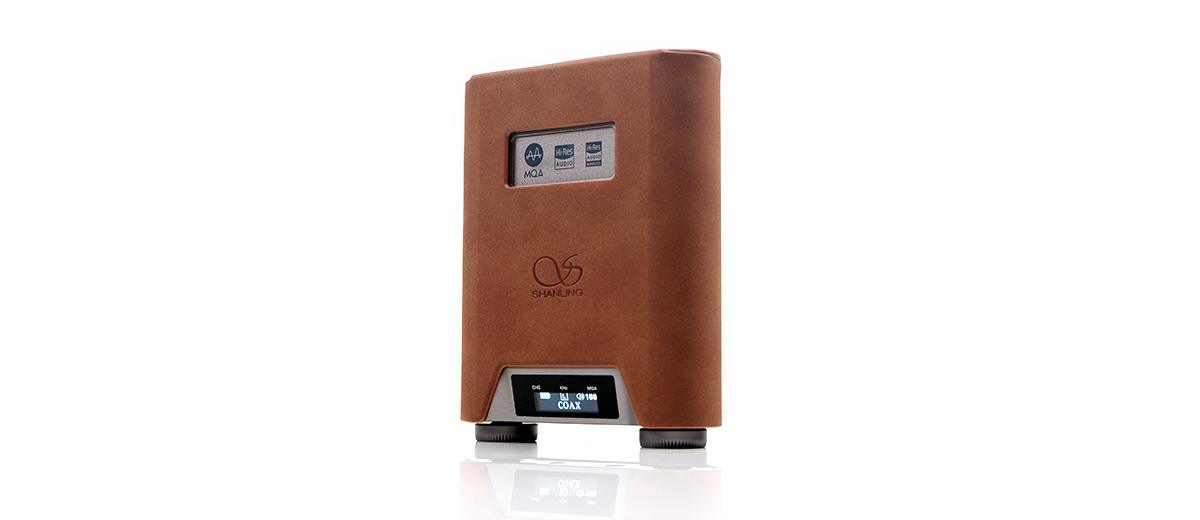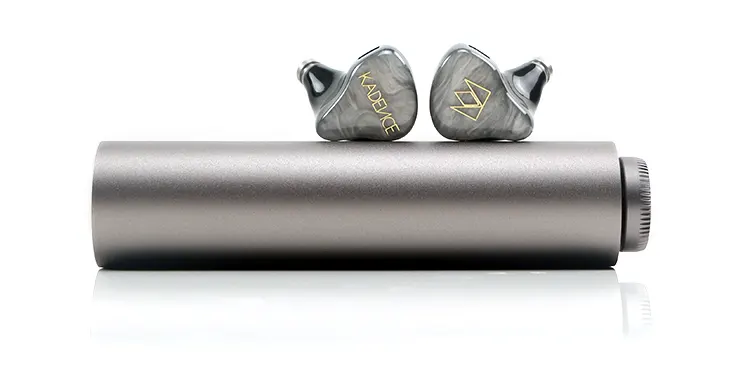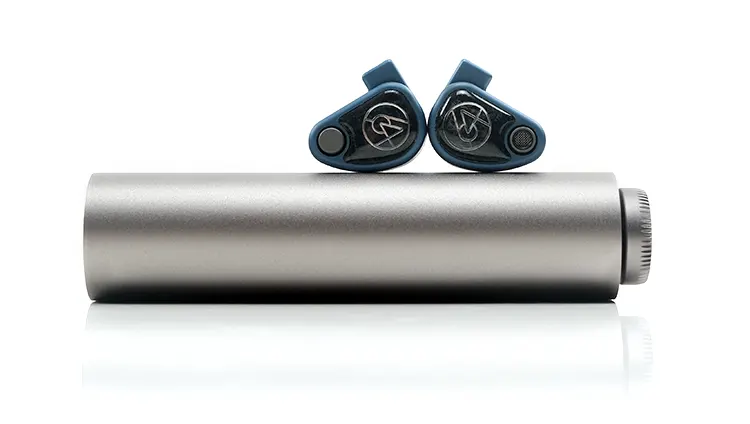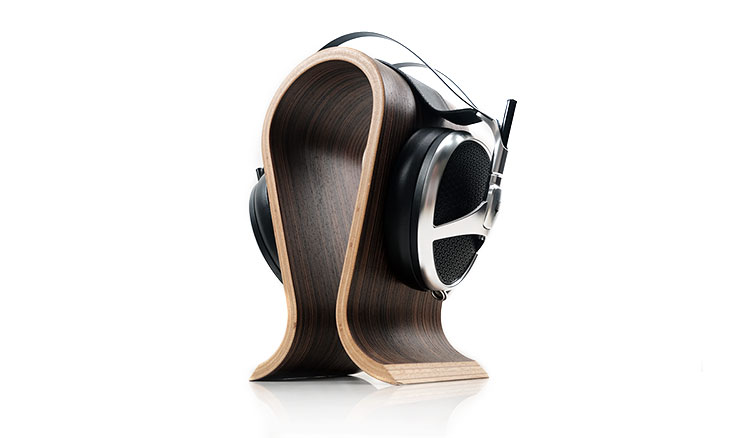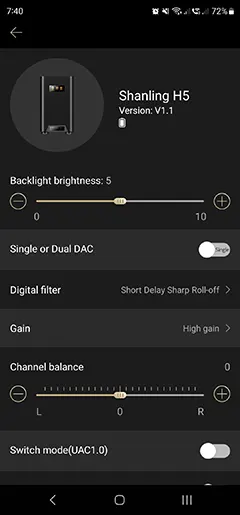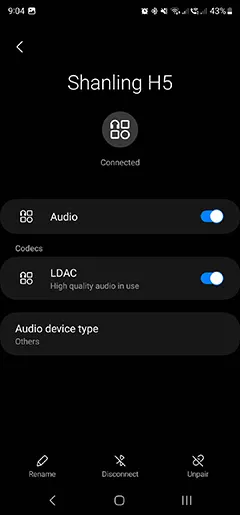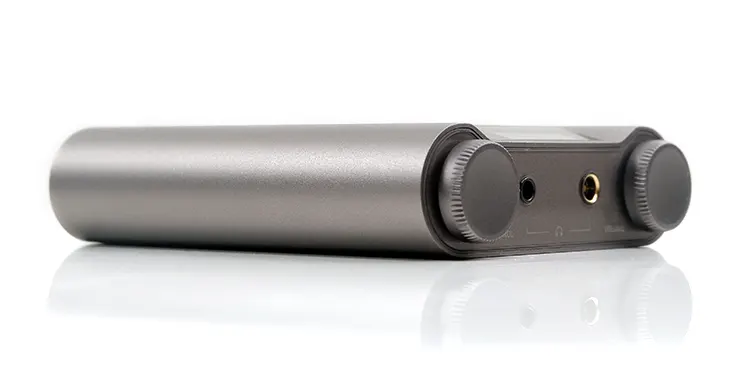Sound Impressions
The following impressions were created using the Shanling H5 local media player combined with the 64 Audio U4s, the Noble Audio Kadence, and a custom-designed version of JH Audio’s Jolene.
Summary
The Shanling H5 is a smooth, weighty, and rich-sounding portable amp. The new AKM AK4493AQ retains the best aspects of the older EQ version including its excellent bass power and general levels of PRaT combined with a forward and emotive vocal presence.
At the same time, combined with the chosen opamps, the H5 implementation refines on some of the rawer aspects of the older chipset’s peppy upper-mids and lower treble performance leaving out the overt harmonic dissonance to produce a more natural percussion and vocal tone.
It is an exceedingly engaging match for those looking to beef up their monitor or headphones performance or inject girth into the vocal performance. IEMs that can sizzle on the highs when poorly matched such as the Noble Audio Kadence will sound more forgiving with the H5.
It is a more intimate presentation not as holographic or as wide as the H7. However, that is how I always remembered the AK4993EQ being tuned all those years ago so in all honesty, I am not surprised by the stronger bias to a forward bass and midrange image.
I would recommend you go into the settings menu and switch on the dual-DAC mode. Then forget about this setting forever despite its resulting shorter battery life. Use this as your default as it maximizes the presence and level of fine detail possible from the H5. Single-DAC mode sounds flatter to my ear and not as engaging.
One final note, some IEMs will have slightly different tonal profiles with impedance skew a factor from the high Ω output rating on the H5. Using IEMatch does seem to smoothen the highs or flatten the bass on some or enhance the upper bass on others. Your preferences on what’s more suitable may vary when testing this.
Timbre
Without IEMatch I found the H5 timbre to be generally towards the warm and dense side teasing out a generally fulsome tone combined with a strong bass fundamental.
If you are coming from the H7 there is a noticeable increase in bass weight and bloom combined with a richer forward midrange tonal quality. Alternative portable amp/DACs such as the Mojo 2 are more neutral with a cleaner more reference-type tonal quality in its stock tuning.
Treble presence on the H5, at least in terms of upper treble sparkle is attenuated and more relaxed than its bigger sibling. There is a bit more focus on the lower treble and upper-mids which is a bit similar to how I found the older AK4493EQ implementation.
Thankfully, though forward, its more rounded tone produces smoother percussion and treble performances in general so less fatiguing than the sometimes edgy delivery from the older generation chipset implementation.
One thing I must mention is the IEMatch effect if you plan on using it. It does slightly level off the bass weight but retains the generally warm and lush tone throughout. If anything, the tone is even more euphonic with a bit more midrange presence teasing a very even-harmonic bias in the timbre.
Without it, the H5 reverted to a punchier low-end with a bit more treble sparkle inducing more contrast in the timbre and a slightly better level of clarity and definition in the presentation which at times I actually preferred on some pairings.
Staging & Dynamics
I noted in the H7 how its own staging quality was wide and holographic but with a relaxed midrange imaging and a bass slightly above neutral but nothing dominant.
Well, the H5 staging is almost the opposite with a stronger bias to depth and a forward mids presence with both aspects dominating in monitor presentations. It is a more intimate presentation, with less separation, space, and width, and pulls you right into the mix.
If you are a vocal lover the H5 will image in your favor but if you need headroom and space it’s unlikely to impress. Consider this the mosh pit version of the arena-like H7 experience with that rhythmic in-your-face bass presence and the singer right in front of you.
This type of presentation worked well with the Jolene. Now, the Jolene didn’t work for me with the H7 previously. This monitor can be a bit dark on the vocals and the H7’s relaxed vocal imaging didn’t give it any sense of immediacy.
The H5 pulls out a much stronger vocal image from the Jolene which works well for my tastes. It does lack the excellent space and width of the H7 but I prefer the more emotive presentation of the smaller unit with the Jolene despite the loss of some of the excellent technical aspects of the H7 imaging.
I do have to note a few technical observations which I will go into more detail in our synergy section. The first is a nice black background that even with the Kadence the Mojo 2 struggles to provide. The second is the channel balancing on low volume levels which shows no distinct left or right bias.
Synergy
Efficiency
If we go by pure flexibility for power, the H5 will cater to both IEM and headphones. At up to 227mW single-ended and 840mW into 32Ω balanced there is enough flexibility there for sensitive IEMs right up to moderately efficient planar headphones.
Just to note for very sensitive IEMs like the Noble Audio Kadence the noise floor is very low with no detectable hiss from either output compared to the Chord Electronics Mojo 2 which did output a detectable low level of hiss with the same IEM.
Mind you, some consequences aside from a potential frequency skew from the H5’s higher impedance output is normally a lower detectable noise floor so that may well be a factor. If you cannot detect any skew then the black background from both of the H5 outputs is an excellent bonus.
Impedance Skew
Impedance skew was something I tested with the Andromeda 2020, the Kadence, and the JH Audio Contour XO, using an iFi Audio iEMatch adaptor. All of these monitors are pure BA driver IEMs with low impedance values on paper.
With each IEM there is a definite difference using the iEMatch on the lower impedance setting with the H5’s balanced output.
Without it, the Contour XO sounds cleaner, more v-shaped, and with higher levels of contrast. The bass is punchy and to the fore with treble also pushed and forward sounding. With iEMatch the sound is warmer, and more evenly balanced with a slight diminution of the mid-bass and highs giving the smoother mids timbre a bit more focus.
The Andromeda 2020 also sounded a little sucked-out with brighter highs and a more neutral tone through the mids and lows. With iEMatch, there was some additional body in the upper bass, a softer treble, and a warmer midrange.
The Kadence had a bit more additional softness with iEMatch, not as exciting or as dynamic when using it without the impedance adaptor but also not as peppy in the highs.
Honestly, there are arguments for both sound signatures here just depends on how wedded you are to the true sound signature of each IEM. I actually enjoyed the more energetic non-iEMatch sound signature for the Kadence and the Contour XO but preferred the smoother iEMatch performance of the Andromeda 2020.
IEM Pairings
Given the driving bass performance and the intimate full-bodied vocal imaging, I tended to let my hair down a bit and go with a lot of dynamic driver hybrids with the H5. It is also a good unit if you feel your monitor can play a bit lean on the lows and you want to inject a bit more weight and warmth into the sound signature.
For example, the JH Audio Jolene, (custom version), left me unmoved during the H7 review. It’s technically superior to the H5 in terms of casting a wider and more holographic soundstage but it’s very relaxed in the vocal and not as driven on the lows.
The Jolene got its mojo back with the H5 sounding thunderous on the lows and with more presence in the mids and lower treble. You will lose some resolution and openness but the intimacy is fine for me so long as I can ‘feel the rhythm’ as that is what Jolene is all about for me.
Another good example was the Kadence which sounds a little sharp on the highs for my tastes on the Mojo 2. With the H5 it was smoother and weightier, though not fizz-free on the lower treble, but just enough to take the edge off compared to the Mojo 2. Again, the vocals have some pleasing bloom and presence.
Flat impedance monitors are a canny choice also. The 64 Audio U4s was not only more faithful to its own tuning plugged in without IEMatch but also delivered a nice smooth mids and highs performance and plenty of gusty on the lows.
My only criticism here is that the bass can sometimes be a bit too smooth lacking a bit of definition and clarity compared to the Mojo 2 cleaner neutral tone.
Power
I wouldn’t bother with the SE output of the H5 and just go straight for the balanced 4.4mm option as the power difference between the two is substantial. You really do want as much separation as possible on any headphones paired with the H5 and the 4.4mm stronger output and better channel separation are more appropriate.
Once you start moving into headphones testing you begin to pick up more on the technical gap between the H5 and the H7. The additional power of the H7 provides for more headroom, better dynamic range, and a more filled-in and wider soundstage.
Still, the H5 timbre is really quite enjoyable with some headphones, especially with that stronger bass fundamental, and at 840mW max at 32Ω headphones such as the Audeze MM-500 and the Meze Audio Elite are driven fairly well.
The Elite is a nice pairing with the H5 fleshing out the mid-vocal presence and responding well to the H5’s penchant for ‘bouncy bass’. It is not the most resolving of matchups and I doubt this would be a no 1 choice for Elite owners but it’s a nice example of good tonal pairing.
The MM-500/H5 pairing came across as a bit warmer and denser with some nice low-end body but lacked the spaciousness and clarity of the H7. That additional power from the flagship amp really can open things up for these two planar headphones.
Actually, compared to IEMs the H5 is not quite as dominant on the lows with the H5. Since planars are impedance agnostic the high output ohms on the H5 become less relevant. I did find IEMatch with IEMs to produce a similarly strong but not overpowering punchy low-end.
Wireless Performance
Bluetooth Audio
No question you get a drop in dynamics and overall note definition moving from local playback to Bluetooth on the H5. Treble clarity is shelved down just a little and bass becomes more aggressive with heightened bloom though vocal presence remains relatively undiminished.
Compared to the H7 BT performance, and despite its improved width and height, I might actually prefer how the H5 comes across using Bluetooth.
With resolution dropping a little you tend to lose the H7’s competitive wired edge for overall clarity and it becomes more of a straight shootout in terms of which coloration and FR bias you prefer.
Using the JH Audio Contour XO I actually biased to the deeper and juicier tone of the H5 with vocals to the fore though it’s not as wide or as well separated as the H7 equivalent.
The H5 does connect better with the rhythmic aspect of music for me and I tend to find myself more of a casual listener on Bluetooth so the pairing sounds more suited to my tastes when going wireless.
Eddict App Performance
The pairing process remains the same so that means avoiding pairing via Android or iOS’s traditional pairing mechanism and pairing directly through the SyncLink controller inside the app.
If you pair via the Phone directly you will be accessing the phone’s media and playing over BT which will reduce the quality of the performance.
The H5’s Bluetooth is, by default, an always-on feature, so the Eddict app will find it and initiate a SyncLink pairing but will not if already paired in BT mode, (status is ‘connection failed’).
Mind you the app is a bit buggy for switching between compatible devices. If you are crazy enough to have both an H5 and an H7, switching between them seems to result in a connection and then a sudden disconnection notice. Only by coming out of the SyncLink screen and going back into it will you see the device of choice connected.
Once connected inside Eddict you can opt to do a music scan on any locally stored memory card and populate the local music option on the app. Personally, I find the app to be much more user-friendly than trying to directly access music through the player’s physical controls.
Remember the H5 will not see folders as such so navigation for any large media collections is time-consuming and boarding on the impossible. Better to work it through the Eddict app which has the correct folder structures and metatag-based category structures.
One note on the app’s development. We are now working with v2.1.8 so cover art is fully functioning over Bluetooth for playback but we still do not have any cover displays in the media manager. The problems also continue to persist with the iOS version not showing any artwork at all. I had hoped that would be fixed by now.
Wired Connectivity
USB-OTG
The H5 comes with an attractively-finished short braided USB-C OTG cable that works for almost any Android platform out there. Testing with a Samsung S23 Ultra provided no issues for me.
However, for iOS and Lightning, you will have to buy the additional Shanling cable for 100% compatibility with the H5 and your iPhone. I suspect most will start with OTG and if I had not reviewed the H7 that is where I would be also.
However, local playback on the H5 still has an edge over the OTG performance and that is where I would recommend you start unless you plan on keeping BT off to conserve your phone’s battery life.
The local playback performance is superior for both volume control and to a lesser extent, overall dynamic range, even compared to both HiBy and FiiO Music’s excellent USB driver modes.
Combined with Eddict’s GUI interface, the H5 turns into a mini-DAP of sorts, which at this price point gives it some additional value.
USB-DAC
The Shanling H5 is plug-and-play with any Windows format that uses the universal 2.0 driver but if you want ASIO capability then you need to download and install the specific USB driver provided by Shanling on their website, (V5.20 at the time of writing).
Do note that the USB driver file for ASIO support is currently filed under the H7 support section of the website rather than the H5 page.
Once loaded, everything up to DSD512 and PCM 768kHz is compatible with the player. Using the USB-DAC output you also get the same excellent volume headroom and dynamic range from the H5 as the local TF card mode provides.
Click on page 3 below for our selected comparisons to the H5.

